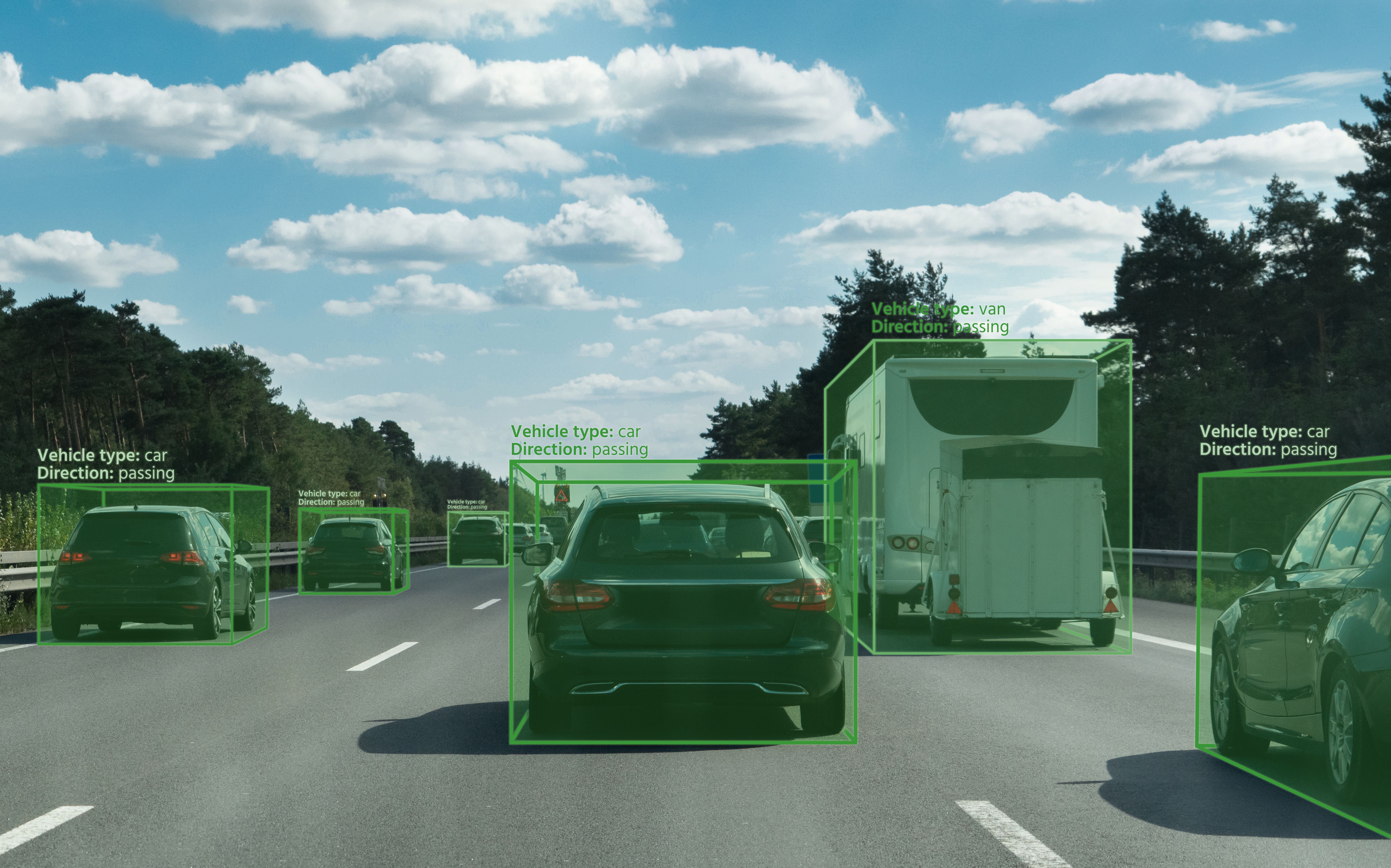New LiDAR System Tested to Further Automated Recognition Systems
Scientists from Pusan National University in the Republic of Korea recently tested a new light detection and ranging (LiDAR)-based system for improving autonomous recognition systems. Their findings were later published in Scientific Reports (1).
Autonomous vehicle vision with system recognition of cars | Image Credit: © scharfsinn86 - stock.adobe.com

Autonomous recognition systems have had massive growth in recent years, finding applications in fields like robotics and driving systems. These systems usually employ camera or light detection and ranging (LiDAR) systems to acquire surrounding environment information during driving. This allows for crucial feedback to be provided for navigation and safety strategies, such as routing and collision avoidance. When combined with time-of-flight (ToF) based light detection, LiDAR systems can allow for measuring object distances over hundreds of meters with centimeter access; this can be furthered when artificial intelligence (AI) is used alongside these systems. However, object recognition and classification through shape information is a system that can still suffer from inaccuracy and misidentification, such as ice on the road or distinguishing between real people and human-shaped objects.
Multi-spectral LiDAR systems have recently been introduced for overcoming these limitations by providing additional material information based on spectroscopic imaging.However, previous iterations of these systems typically employ spectrally resolved detection methods by using bandpass filters or complex dispersive optical systems, which have inherent limitations. For this experiment, the scientists proposed a time-division-multiplexing (TDM) based multi-spectral LiDAR system for semantic object inference by the simultaneous acquisition of spatial and spectral information. The TDM method, which implements spectroscopy by sampling pulses of different wavelengths in the time domain, can eliminate optical loss in dispersive spectroscopy while simultaneously providing a simple, compact, and cost-effective system.
According to the scientists, “By minimizing the time delay between the pulses of different wavelengths within a TDM burst, all pulses arrive at the same location during a scan, thereby collecting spectral information from the same spot on the object, which simplifies data processing for the object classification and allows maintaining a sufficient scan rate of the LiDAR system” (1). Regarding the TDM based multi-spectral LiDAR system used in this experiment, nanosecond pulse lasers with five different wavelengths (980 nm, 1060 nm, 1310 nm, 1550 nm, and 1650 nm) in the short-wave infrared (SWIR) range are utilized, covering a 670 nm bandwidth to acquire sufficient material-dependent differences in reflectance.
To demonstrate the system’s recognition performance, the scientists mapped the multi-spectral images of a human hand, a mannequin hand, a fabric gloved hand, a nitrile gloved hand, and a printed human hand onto a red, green and blue (RGB)-color encoded image. This image clearly visualizes spectral differences as RGB color depending on the material while having a similar shape. Further, the multi-spectral image’s classification performance was demonstrated using a convolution neural network (CNN) model based on the full multi-spectral data set.
Following the experiment, the scientists claimed their system minimized optical loss of the system while enabling simultaneous ranging of the target objects. With the multi-spectral images, a clear distinction was shown between different materials when mapped into an RGB-color encoded image; further, they are believed to be well-suited for systematic classification via CNN architecture with high accuracy, which makes full use of the spectral information. Though there is more research to be done, the scientists believe this technology offers potential for the development of compact multi-spectral LiDAR systems to enhance the safety and reliability of autonomous driving.
Reference
(1) Kim, S.; Jeong, T-I.; Kim, S.; Choi, E.; et al. Time Division Multiplexing Based Multi-Spectral Semantic Camera for LiDAR Applications. Scientific Reports 2024, 14, 11445. DOI: 10.1038/s41598-024-62342-2
Newsletter
Get essential updates on the latest spectroscopy technologies, regulatory standards, and best practices—subscribe today to Spectroscopy.
AI-Powered Fusion Model Improves Detection of Microplastics in the Atmosphere
July 17th 2025Researchers from Nanjing University of Information Science & Technology have introduced a breakthrough AI-enhanced multimodal strategy for real-time detection of polyamide microplastics contaminated with heavy metals.
Integrating Spectroscopy with Machine Learning to Differentiate Seed Varieties
July 15th 2025Researchers at the University of Belgrade have demonstrated that combining Raman and FT-IR spectroscopy with machine learning algorithms offers a highly accurate, non-destructive method for identifying seed varieties in lettuce, paprika, and tomato.